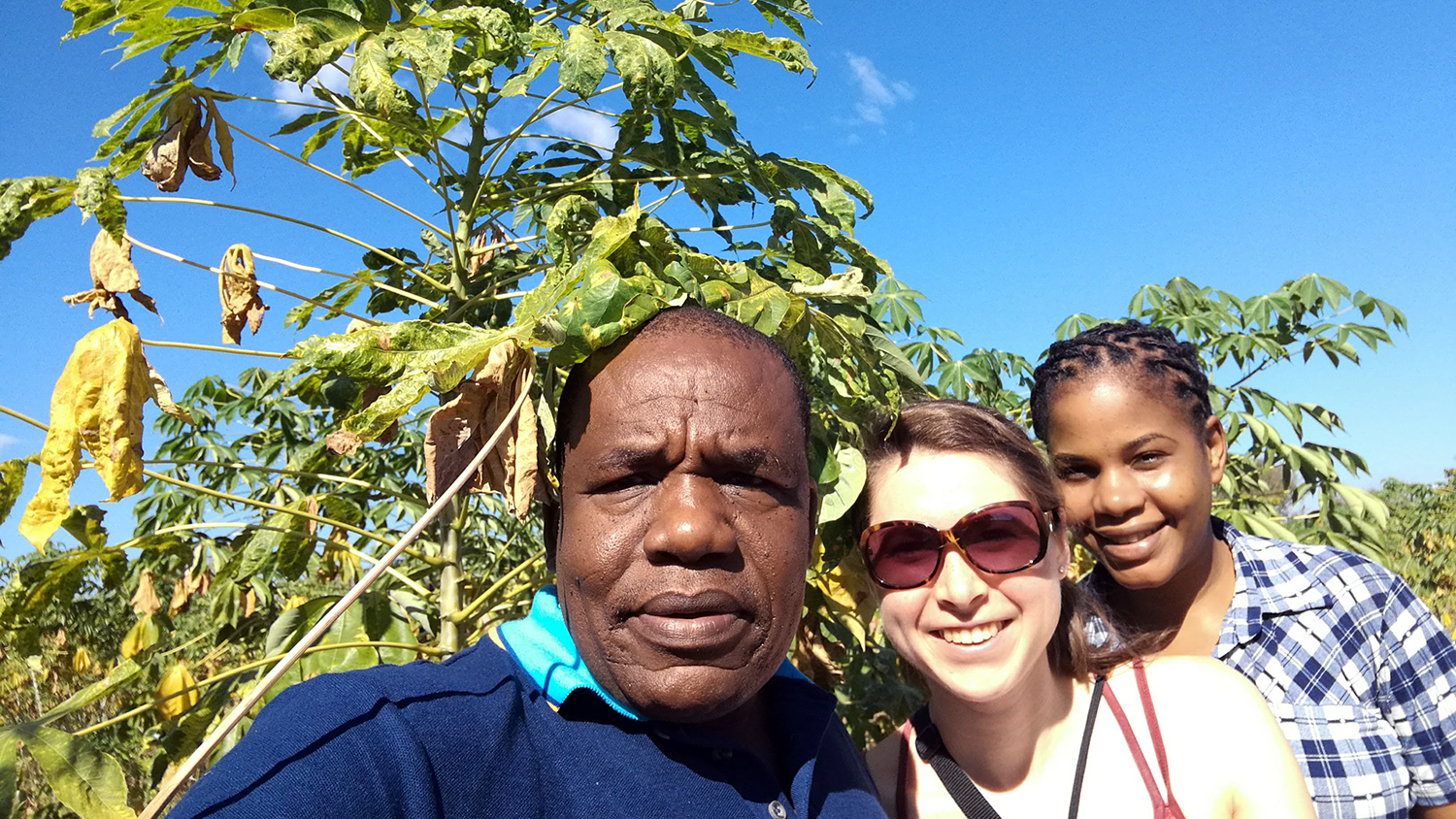Notes from Tanzania: Lessons from the Field

Editor’s Note: This is a guest post by Catherine Doyle, a graduate student in NC State’s Department of Plant and Microbial Biology. Doyle is spending several weeks in Tanzania, doing field work related to a research effort aimed at tackling a disease that threatens the livelihood of people throughout sub-Saharan Africa. You can read other posts related to her work in Africa here.
I’m in the field in rural Tanzania now, and only have a few moments for writing. But I wanted to share some of the things I’ve observed working with growers and researchers over the past week or so.
1. The incidence and spread of Cassava Mosaic Disease (CMD) and another disease, Cassava Brown Streak Disease (CBSD), which rots the tubers, is extensive. As a result, many farmers have stopped planting cassava due to the poor yield from their yearly crop. Most fields we have visited are 90-100 percent infected with CMD and/or CBSD.
2. Many farmers have little knowledge that their fields are infected. From talking to the farmers they think that the yellowing and shriveling of the leaves is from the soil or insects.
3. By educating the farmers we can show them that their plants are sick and how to manage CMD, which improves their crop yield. You can see the impact of talking to farmers and the resulting crop improvement. When we revisit fields that were visited in previous surveys, dating back to 2005, we see less incidence of disease and larger yields.
4. Farmers grow many crops along with cassava, which affects the spread and severity of the disease. Basically, this “intercropping” can decrease transmission efficiency of CMD. For example, here’s how Dr. Ndunguru explained it to me: if you have a field containing maize and cassava and you have 10 whiteflies carrying CMD, the whiteflies will be attracted to the maize as well as the cassava. Therefore, the probability that a whitefly carrying CMD lands on cassava decreases. However, this phenomenon also makes mapping the spread of CMD difficult.
5. Weeds and other crops along the road or edges of fields may also carry the cassava viruses. If they are, viruses acquired by these “field edge” plants could transmit CMD and add new variants of CMD to neighboring cassava fields.
6. The concept of family and sharing is important in small stakeholder farmer life.
7. International collaboration and teamwork between scientists, farmers, and the government can bring about change and improve food security.
Some of these things may seem obvious, but experiencing them firsthand is a powerful experience.
- Categories:


